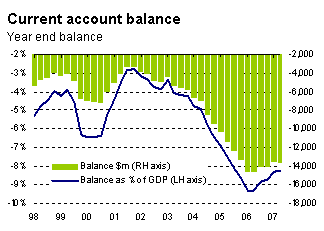How inflationary are tax cuts?
For the last few years, the government has put off cutting taxes because of their inflationary impact. Now, with the government willing to cut taxes, the Reserve Bank is unhappy because of their inflationary impact. This begs the question, how inflationary are tax cuts?
The common view is that tax cuts are inflationary as they increase the demand for products. As a result, if a tax cut was met with a corresponding cut to government spending, inflationary pressures would not increase. However, a recent survey by New Zealand Business Council for Sustainable Development found that over half of New Zealanders do not want tax cuts with a corresponding cut in services. Although a cut in spending does not necessarily imply a cut a services, we will put this issue to one side and focus on the inflationary impact of a stand-alone tax cut.
Given that tax cuts increase demand, any difficulty the firm has in increasing production will lead to an increase in prices instead. The difficulty associated with increasing production is even more severe when the economy is running near full capacity, as it is now.
An extreme example is an economy where no more goods can be produced. In this case if everyone’s income rose by 2%, there would be no extra goods to consume and prices would be 'bid up’ by 2%. The Reserve Bank is worried that we are in a similar situation.
The Reserve Bank’s mandate is to ensure that New Zealand’s inflation outcomes are between "1 to 3 percent on average over the medium term". Although this definition is a bit fuzzy, it generally implies that the Bank must try to keep the average of inflation over a three-five year period between 1% and 3%.
Over the medium-term, tax cuts do more than increase household’s demand for goods and services. Lower taxes offer house holds a higher return on their labour input, which will persuade more people to enter the labour market, or may convince employees to work a few extra hours. Also a lower tax rate would make it easier for firms to attract labour from overseas and prevent local born workers leaving.
When extra workers enter the labour market it slows inflation in two ways:
- The more people that are willing to work, the more competition for jobs there is, which slows wage growth. As wages are a cost to the firm, this implies firm costs grow more slowly, which leads to slower growth in prices.
- The more people working, the more goods and services that can be produced, creating extra products for New Zealanders to consume.
This 'supply side’ view of tax cuts has become popular in Australia. The Australian Treasury believes that the cumulative effect of tax cuts since July 2000 (when new tax laws were introduced) has, by itself, increased labour supply by 300,000 people. This is2.8% of currently employed people and 21% of the total increase in labour supply over the last seven years!
Many people believe that an equivalent increase in labour supply is not likely in New Zealand, given that participation rates are generally already higher in New Zealand than Australia. However, this depends on the structure of the tax cuts. The effectiveness of the Australian tax package came about as it enticed secondary earners into the labour market, and attracted workers from overseas. An equivalent series of tax cuts in New Zealand would function mainly by attracting back some of the horde of New Zealanders moving overseas, and prevent a fresh cohort of New Zealanders joining them.
According to estimates by the New Zealand Institute of Economic Research if New Zealand shifted to a similar bundle of taxes as Australia, the initial injection into the economy would be $4bn. To put this figure in perspective, annual nominal private consumption is $100bn, so if all the tax cut is spent by households, then initially the value of consumption would increase by 4%. This would provide a significant fiscal stimulus, even if employment leapt by 2.8%.
However, this is not the whole story as a tax cut would influence savings. Government savings (budget surpluses) have been strong over the last few years and as the government has recently admitted, these surpluses have been structural (permanent). This is important as household recognise that consistently high surpluses are politically unsustainable. As a result, households and businesses will have borrowed money safe in the knowledge that taxes will be cut at some point.
In fact, our hefty current account deficit is an indicator that New Zealand households and firms are doing just that (as a current account deficit implies that we are borrowing from the rest of the world to fund consumption and investment).

Since New Zealanders are already spending their future tax cuts, this suggests that a cut in New Zealanders taxes will mainly be used to pay down debt, rather than as a means to increase consumption.
As an appropriately designed tax package will increase the supply of labour and households are likely to save a significant proportion of any tax cut, the medium term impact of tax cuts may not be significantly inflationary.




